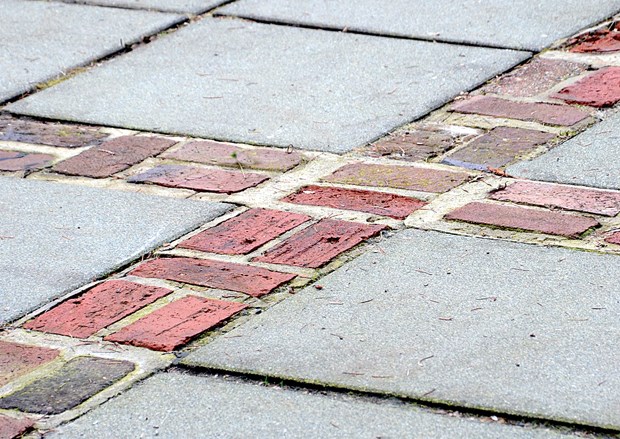Of the many problems that occur in the garden over the winter, damage to concrete, stone walks and paving stone areas can be among the most costly to repair.
For our discussion, let's use "stone" to describe concrete, paving stones, slate, flagstone and paving slabs.
There are several reasons why stone walks and patios fail, including poor base preparation, wrong product for the location, frost jacking of cracks in concrete and frost heaving of the stone's supporting base.
Incorrect base preparation is the single most common reason why stone constructions fail. Proper base preparation is important if you are interested in having a walkway or patio last more than a year.
It is important to remember that when you hire a contractor to build a stone walkway or patio, you are really paying for the contractor to build a proper base under the stone's surface to support the stone and withstand sinking or heaving.
Proper base preparation starts with removal of all organic soil from under the walkway or patio footprint. Organic soil left under the surface will compress over time, resulting in a sinking surface. Once the organic matter is removed, the remaining sub-soil should be graded to provide positive drainage in the desired direction. Then, the sub-soil should be mechanically compacted (use a plate tamper) to provide a firm surface for the installation of granular base material that will
support the new stone surface. The next step requires the installation of granular material to form a base. Use three-quarter inch minus crushed gravel (with fines), or a larger size depending on the site's requirements.
The granular material is installed to raise the height to the desired level upon which sand and stone will sit. Once the granular base is installed it must be thoroughly compacted to remove all air and settle into a hard state.
To check whether you have compacted properly, step on the granular base. If your foot leaves an impression deeper than a millimetre then you have not compacted enough. Do it again.
Once the granular base material is installed and compacted, install a thin layer of sand, usually one to two inches thick. The sand layer is not needed if concrete is being installed. Only use sand for pavers, slate and flagstone. It's sometimes not needed if you are mortaring the stone into place. However, I rarely use mortar for installing most stone patios or walkways because mortar will usually crack.
A dry set installation (using gravel, sand and/or rock dust only) is semiporous, which is good for groundwater recharging. Dry set installations do not crack, sink or heave if they are properly built. The purpose of the sand is to provide cushion for the stone so it can be compacted into place. Sand is also used for screeding (levelling) for some stone products because granular material is too difficult to screed properly.
I usually install one inch of sand compared to the standard specification of two inches or more. The reason for my preference is to deny ants a home to live in. Once the sand is placed and levelled, it must be mechanically compacted.
Once all base and cushion preparation is completed, the stone surface can be installed. When installing paving stones, after the pavers are fully installed - including all cutting and edge restraint - run the plate tamper over them to gently drive them into the sand layer, providing optimum firmness and durability. For slate or flagstone, use measures to prevent cracking or scratching of the stone during plate tamping. If the slate or flagstone is thicker than an inch, which it should be, two inches is preferred, and the slab size is two to three feet in diameter or larger, then no plate tamping is required because the size and weight of the stone will keep it in place. For manufactured paving slabs that are one to two feet in size and usually square, plate tamping is required to drive them into place. Use protective measures to prevent scratching or cracking of the slabs.
For the installation of all dry set stone patios and walkways, the specifications of installation I have described are the minimum that professional contractors use to provide strong, durable constructions that withstand many years of wear. If your contractor does not understand what I have explained then you have the wrong contractor.
Cost is a factor for every project, but you get what you pay for. It's hard to adjust the specifications without compromising durability, so usually project scope is adjusted to fit the budget, not the specifications.
Properly constructed stone patios and walkways add value to the property and they can be enjoyed for many years.
Todd Major is a journeyman horticulturist, garden designer and builder, teacher and organic advocate. For advice contact him at [email protected].



